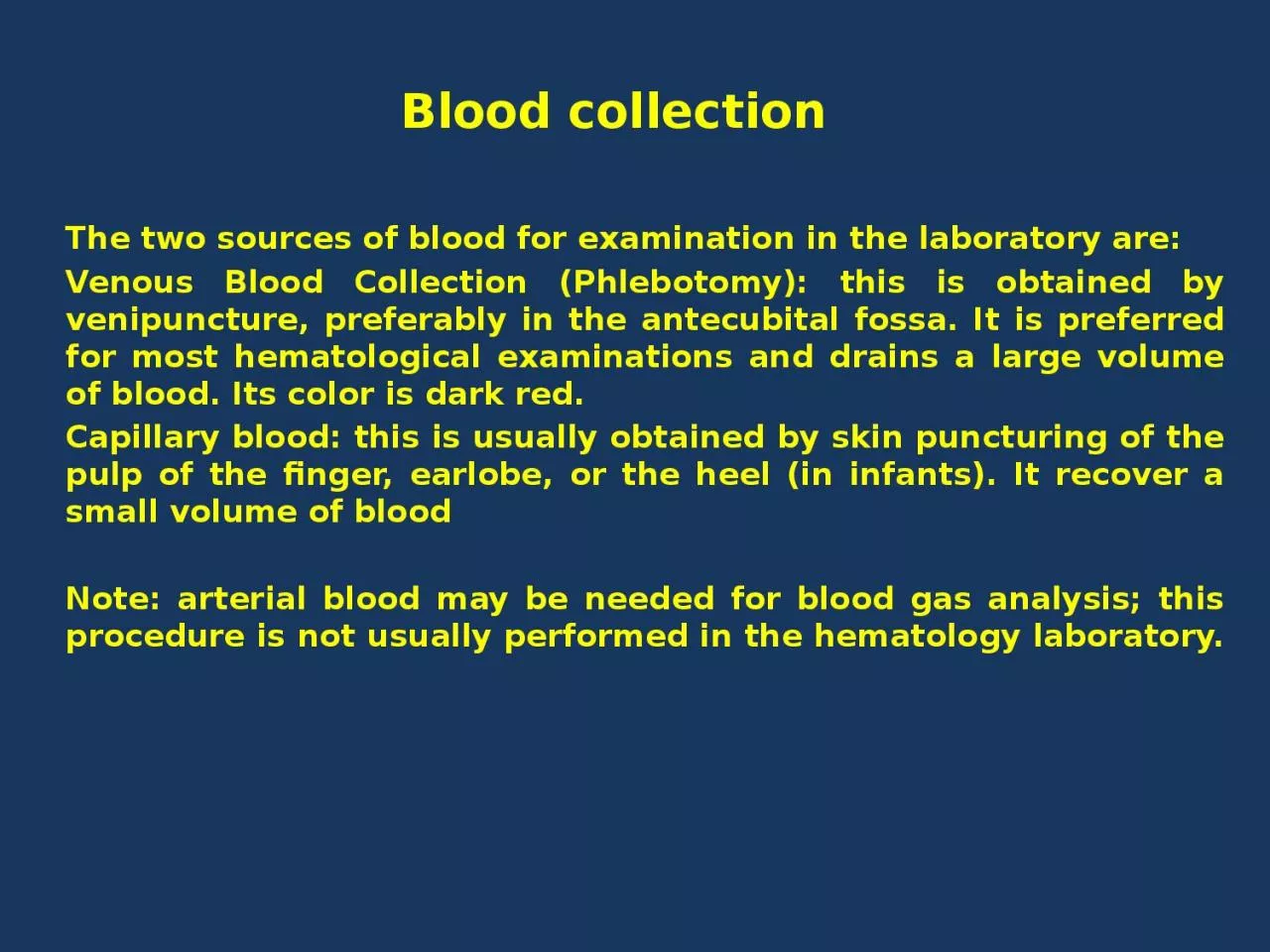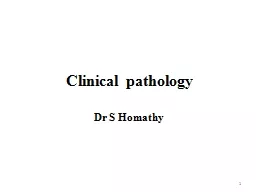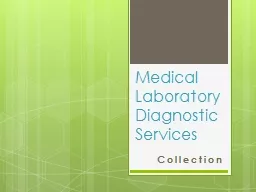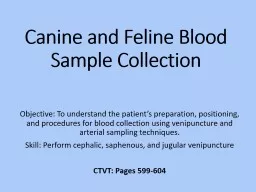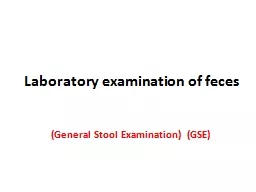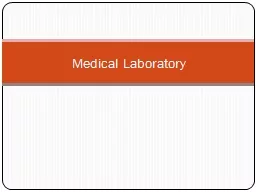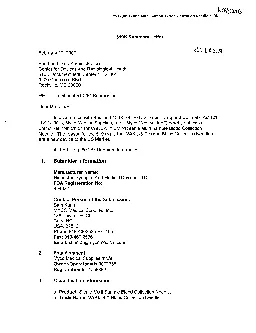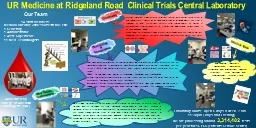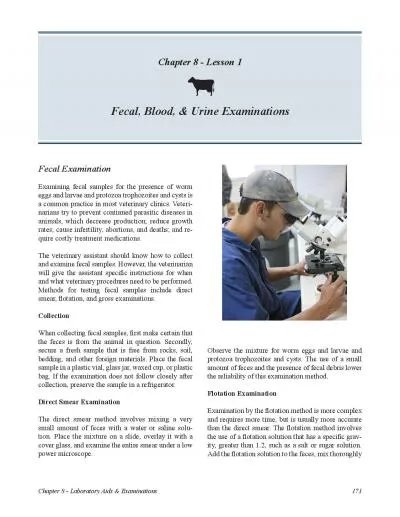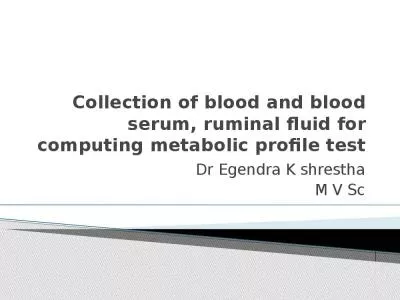PPT-Blood collection The two sources of blood for examination in the laboratory are:
Author : elizabeth | Published Date : 2023-07-08
Venous Blood Collection Phlebotomy this is obtained by venipuncture preferably in the antecubital fossa It is preferred for most hematological examinations and
Presentation Embed Code
Download Presentation
Download Presentation The PPT/PDF document "Blood collection The two sources of blo..." is the property of its rightful owner. Permission is granted to download and print the materials on this website for personal, non-commercial use only, and to display it on your personal computer provided you do not modify the materials and that you retain all copyright notices contained in the materials. By downloading content from our website, you accept the terms of this agreement.
Blood collection The two sources of blood for examination in the laboratory are:: Transcript
Download Rules Of Document
"Blood collection The two sources of blood for examination in the laboratory are:"The content belongs to its owner. You may download and print it for personal use, without modification, and keep all copyright notices. By downloading, you agree to these terms.
Related Documents

